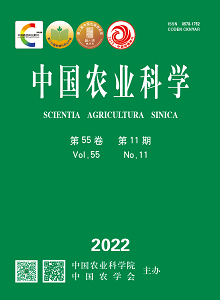【Objective】 Sulfur dioxide (SO2) treatment can effectively prevent Botrytis cinerea and postharvest decay, but it can lead to berry abscission, the purpose of this study was to explore the molecular mechanism of grape berry abscission induced by SO2. 【Method】 Kyoho grapes were treated with SO2, samples were collected at 2, 4 and 6 d, respectively, and the grape berry abscission rates of the control group (CK) and SO2 treatment group. The samples of ‘Kyoho’ grapes under CK control and SO2-treated were sequenced at 2, 4 and 6 d after harvest by high-throughput sequencing technique, the grape genome was used as the reference genome for sequence alignment, and the gene expression was calculated by TPM algorithm, the transcriptome data were systematically analyzed by gene set enrichment analysis (GSEA), gene co-expression network (GCN) and transcription regulation network prediction, and the expression was verified by using quantitative real-time fluorescence PCR (qRT-PCR). 【Result】 SO2 treatment could significantly induce grape berry abscission, the grape berry abscission treated with SO2 was 9.88% at 2 d and 19.24% at 4 d, which were significantly higher than those in the control group, the abscission rate reached 38.25% at 6 d, while the abscission rate of the control group was only 11.85%. GSEA analysis showed that the GO biological process enriched in CK group was mainly related to oxidative stress response, cell wall metabolism and phenylalanine metabolic pathway, and CK group was enriched in plant cell wall tissue, pectin metabolism, cell wall modification, polygalacturonic acid and other pathways. The GO biological process enriched in SO2 group is mainly related to energy metabolism pathway, and it is enriched to photosynthesis, tetrapyrrole metabolism, precursor metabolite and energy production, glucose metabolism and other pathways in SO2 group at 2 d. The KEGG metabolic pathways enriched in CK group mainly include the mutual conversion of pentose and glucuronic acid, galactose metabolism, plant hormone signal transduction, citric acid cycle (TCA cycle), etc. SO2 group includes photosynthesis, citric acid cycle (TCA cycle), glycolysis, etc. GCN divided the leading genes in GSEA analysis into 12 levels: level 4-9 were enriched in energy metabolism and glucose metabolism-related pathways, while level 4 was enriched in hormone response and oxidative stress response. The transcriptional regulation prediction analysis of GCN key level gene promoter sequences showed that there were 987 pairs of regulatory relationships among 95 transcription factors (TFs). WRKY14, WOX8, KUA1 were continuously downregulated under SO2 treatment, wihle MYB60, MYB73, ANL2, ERF2, DOF3.6, GATA25, WRKY57, KAN2, ATHB6 were continuously upregulated under SO2 treatment. In addition, MYB15, WRKY11, WRKY33, WRKY40, WRK75 were first adjusted upwards and then downwards. The transcriptional regulatory networks of ERF2, MYB60 and WRKY40 revealed that the regulated target genes were involved in cell wall metabolism, sugar metabolism and other related pathways. The qRT-PCR results showed that the up-regulated expression trend of PME36 and ERF2 was similar, and GAUT7, MYB60 and UGE3 had similar up-regulated expression trends. In addition, WRKY40 was induced to be up-regulated at 2 and 4 d of SO2 treatment, PPME1 and COMT1 expression was consistently down-regulated, and LAC15 was significantly up-regulated at 4 d of SO2 treatment. 【Conclusion】 SO2 induced the expression of genes related to nutrient metabolism, energy metabolism and cell wall metabolism pathway, which was regulated by a variety of transcription factors, and eventually leads to the grape berry abscission.









